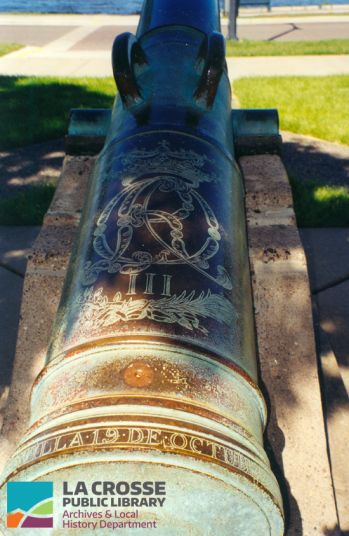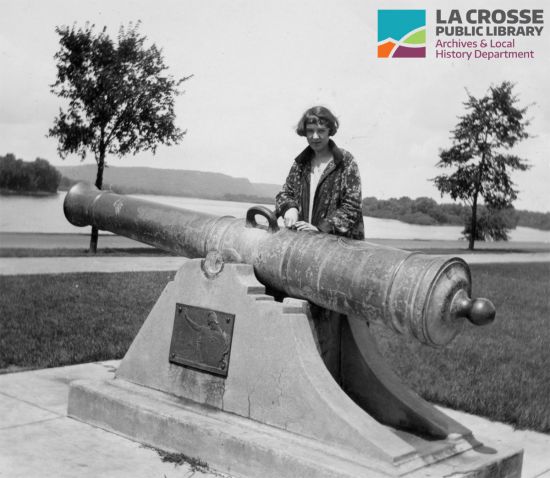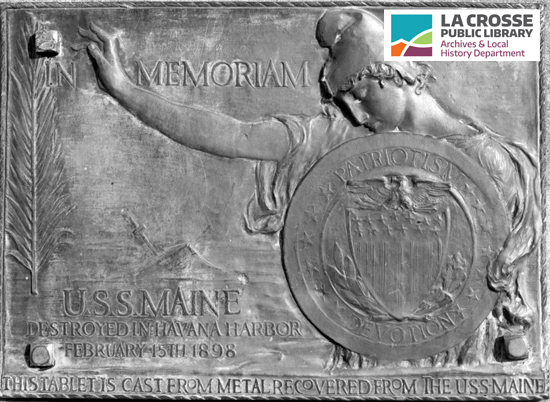
The Cannon in Riverside Park
Written by Sam Ott and Jenny DeRocher, edited by Anita Taylor Doering.
The cannon in Riverside Park has been an attraction since it was placed there over 100 years ago. It had a complicated journey to La Crosse. It was cast in Spain in the 1780s and was made to guard Spain's large colonial empire. One of Spain's colonies was Cuba, and that is where this cannon was shipped. It stood guard over the Havana Harbor for over 100 years before being captured by US troops.

In the 1860s, Cuba revolutionaries began a long effort for liberation from Spain. The third and last war between Cuba and Spain called the Cuban War of Independence. Three years into this conflict, in 1898, an explosion led to the sinking of the American battleship USS Maine, which was stationed in Havana Harbor not far from this cannon. The US blamed Spain for the explosion and declared war, effectively intervening in the Cuban War of Independence and officially kicking off the Spanish-American War. Some historians argue that the USS Maine was stationed at the harbor with the intent to intervene.
Not long after US intervention, Cuba won independence from Spain (though they were subject to another three years of colonialist US military rule). The Spanish cannons were captured by US soldiers as a war prize and consequently confiscated by the government, who made plans to distribute the cannons to various states. Congressman John Esch worked hard to help secure two cannons for Wisconsin and lobbied the governor for one to be placed in La Crosse.

A 1924 photo of the cannon with an unidentified woman.
The memorial plaque on the side of the cannon was made from metal recovered from the USS Maine and it reads:
In memorial U.S.S. Maine. Destroyed in Havana Harbor, February 1898.

The background of the shield depicts stars and an eagle with its wings outstretched, framed with the words "Patriotism" and "Devotion."
During WWII La Crosse residents petitioned the city to have the cannon recycled by re-using the metal in support of the war effort. However, the cannon made of a particular type of copper, which was not in high demand for war supplies.
Today, the 240-year-old Spanish-made cannon tells the story of American national pride that was established during these 20th century wars. And it embodies the United States' complicated past with fighting colonialism while the Federal Government continued to engage in colonialism itself.


